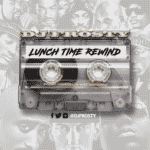mexican

In late 2022, Latin urban music appeared to be an indomitable force after nearly a decade of chart supremacy. Bad Bunny, Billboard‘s Artist of the year, topped both Latin charts and global charts — and on top of that, he was the highest-grossing touring artist of 2022. Other urban-leaning global hits were churned out at lightning speed: Karol G and Becky G’s “Mamii”; Rauw Alejandro and Chencho Corleone’s “Desesperados.” Bizarrap’s music sessions became fabled.
Explore
See latest videos, charts and news
See latest videos, charts and news
Six months later, the pendulum has swung in a different direction. Sharply. This week, 13 of the 17 Spanish-language tracks on the Billboard Hot 100 are regional Mexican tracks, or “música Mexicana,” as it’s called by some. They include the highest-charting Latin track on the chart, Eslabon Armado and Peso Pluma’s “Ella Baila Sola,” which ranks at No. 10 for its second consecutive week after peaking at No. 4.
Of those 13 tracks, one features Bad Bunny — who, smartly recognizing the new wave, recorded “unx100to” with Grupo Frontera. Even Bizarrap’s new music session, “Vol. 55,” features Peso Pluma, the hottest regional Mexican act of the moment and only the second Mexican artist to be featured in a session (the first, Sno Tha Product, is an urban act).
It all couldn’t sound more different to reggaetón, which not only explains part of the appeal — but also signals that Latin listeners may be suffering from reggaetón and urban music fatigue, and ready to discover new sounds. Led by acts like Peso Pluma, Eslabón Armado, Fuerza Regida and Luis R. Conríquez, today’s Mexican music is earthy, guitar- and brass-based and devoid of Auto-Tune and drum machines, the hallmarks of reggaetón for over a decade. Mexican music shows, like those by the likes of Peso Pluma, Natanael Cano, Carín León, Fuerza Regida and Conríquez, are live music spectacles, with full bands — whether big or small — playing live onstage, rather than using tracks and pads.
While reggaetón acts often cite the cost of their dancers and pyro as a primary budgetary concern, regional Mexican acts largely eschew those frills in favor of sheer musical manpower. Mexican music shows rarely incorporate dancers; the live music is meant to be the center of attention and it’s also the heart of the genre, for artists young and old. How could an act like Yahrtiza y su Esencia, for example, possibly exist without those two dueling guitars? How could Pepe Aguilar sing without his mariachi? When one sees Peso Pluma performing with that fierce, seven-piece band behind him, the thought of replacing them with dancers feels anathema to the spirit of his performance; the mere choice of a tuba line or a guitar is deliberate and congruent with the style of each particular song, whether it be a corrido or a sierreño.
While many reggaetón acts hone their chops in front of a computer in the recording studio, Mexican acts do so by playing together in their garages and learning from each other, much like punk and rock bands always did. That organic feel and camaraderie translates into the recordings and onto the stage and fans are devouring it.
And then, there’s the lyrics: Mexican music remains, in essence, focused on romance and story-telling. Yes, narcocorridos — the tales of drug users, drug lords and their exploits — abound, and the lyrics, full of bravado and braggadocio, often glorify the subject matter, something that’s far less common in reggaetón (and that I’m not a fan of). On the other hand, Mexican music largely avoids the blatant misogyny of reggaetón and the genre’s continued obsession with assessing the size and heft of women’s breasts and butts and their levels of arousal. There is sexual innuendo — these are no choirboys either –but there is barely any sexual explicitness, either in the music or in the visuals, where women are depicted as sexy temptresses, but rarely as purely sexual objects.
The new Mexican music does take many of its aesthetic cues from reggaetón and urban music: The clothes, the accessories, the jewelry, the swagger. This is, after all, youth pop culture. Beyond that creative aspect, regional Mexican music has also learned from reggaetón as an industry. The genre, which was once notoriously averse to collaborations, now boasts them in spades, a factor that’s been key to its rise in popularity — as Peso Pluma openly said during his South Florida show on Saturday.
But the roots of the music have remained solid, and it’s clearly having an impact outside the Mexican audience. As Mike Tyson put it as he danced to the strains of Peso Pluma’s guitar accompaniment on a social media video touting the singer’s new album, Génesis: “This is my s–t.”
We’re with you, Mike.
-
Pages

 State Champ Radio
State Champ Radio 
